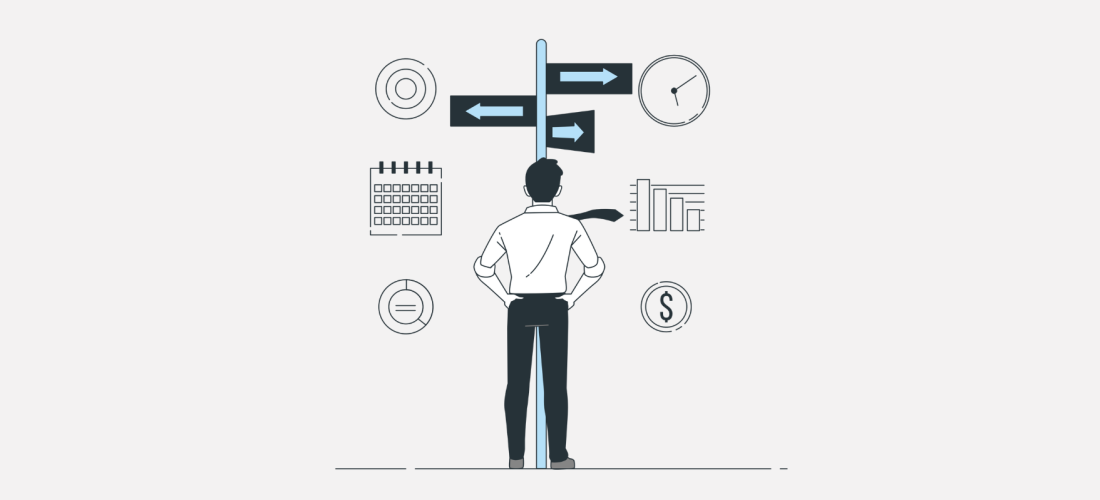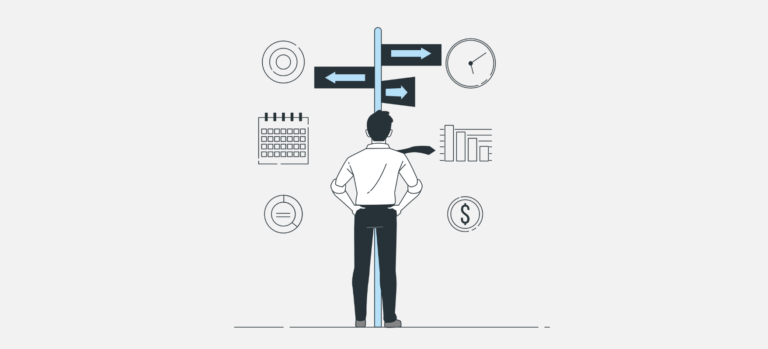What is a 3rd pillar?
The 3rd pillar is an individual pension solution in Switzerland that allows everyone to supplement the benefits provided by the 1st pillar (AVS) and the 2nd pillar (LPP). Its main goal is to maintain a comfortable standard of living in retirement, but it can also offer protection in the event of death or disability, since the 1st and 2nd pillars generally cover only 60 to 75% of regular income.
There are two main forms of the 3rd pillar: the pillar 3a, known as the “tied” option, and the pillar 3b, referred to as the “flexible” option. The former is governed by strict rules but offers attractive tax deductions. The latter is more flexible, with no contribution limits or withdrawal restrictions, though it generally does not provide tax benefits.
What is Pillar 3a?
Pillar 3a, also known as tied pension provision, is a regulated form of individual retirement savings in Switzerland. It allows working individuals to build up savings for retirement while benefiting from a tax advantage. It is a particularly attractive option for supplementing the often insufficient pensions from the 1st and 2nd pillars.
Pillar 3a objectives
The main goal of pillar 3a is to fill income gaps in retirement. Depending on the contract, it can also provide coverage against certain risks such as death or disability. Beyond its pension function, it is often used to prepare for a property purchase or to finance a move toward self-employment.
Contribution limits
In 2025, it will be possible to pay out the following amounts in tied personal pension plans:
- Employee affiliated to a pension fund: Up to CHF 7,258 / year
- Self-employed or employee not affiliated to a pension fund: 20% of income, maximum CHF 36,288
Who can take out a Pillar 3a?
To open a Pillar 3a account, the following conditions must be met:
- Living in Switzerland
- Income from gainful employment subject to AHV contributions
Pillar 3a withdrawal conditions
Money saved in a Pillar 3a account cannot be withdrawn freely. It is blocked for up to five years before the normal AHV retirement age (i.e. from age 60 for women and 61 for men in 2025). Each early withdrawal is taxed separately at a reduced rate, but must be justified and documented.
Early withdrawals are only possible in the following cases:
- Purchase of principal residence (or mortgage repayment)
- Transition to self-employment
- Definitive departure from Switzerland
- Disability leading to a full DI pension
- Death (payment to designated beneficiaries)
- Purchase of 2nd pillar contributions
Pillar 3a: bank account or insurance?
A Pillar 3a account can be opened with a bank or insurance company. Each solution has its advantages. The pillar 3a bank account takes the form of a pension account or a investment funds. It's flexible, with no entry fees and no long-term commitment. You can suspend or modify payments at any time. It's the ideal solution for young people without families.
A pillar 3a linked to an insurance policy is integrated into a life insurance contract, either fund-based or traditional, and may include death or disability coverage. It is less flexible, as premiums are usually fixed and contractually binding. In return, it offers additional financial protection for loved ones, along with a guaranteed capital. This form is suited for those looking to secure a steady income or protection for their family.
Finally, it is important to note that numerous 3a variants exist in both banking and insurance.
3rd Pillar A at a glance
- The main objective of 3a is to build up a better pension
- Payments are fully deductible from your taxable income
- Only professionally active people can take out a 3a
- It is possible to subscribe in bank (flexibility) or insurance (safety)
What is a 3b pillar?
Pillar 3b allows individuals to build up capital over the short, medium, or long term, or to protect their loved ones in the event of death or disability. It can serve various purposes: retirement planning, property purchase, funding children's education, estate planning, or simply creating a financial safety net. It is also frequently used as a tool for wealth transfer. status professional.
Pillar 3b objectives
Pillar 3b allows individuals to build up capital over the short, medium, or long term, or to protect their loved ones in the event of death or disability. It can serve various purposes: retirement planning, property purchase, funding children's education, estate planning, or simply creating a financial safety net. It is also frequently used as a tool for wealth transfer.
Payment limit
Unlike Pillar 3a, Pillar 3b has no annual limit. You can pay in as much as you like, at your own pace. Nor is there any minimum amount.
Pillar 3b taxation
Pillar 3b does not offer tax deductions at federal level. However, certain cantons may grant limited deductions in specific cases, for example for long-term life insurance policies with guaranteed benefits. Generally speaking, however, the tax advantages of Pillar 3b are few or non-existent compared with those of Pillar 3a.
On the other hand, the life annuities are only imposed on 4% (previously 40%). In addition, lump-sum Pillar 3b benefits can be fully tax-exempt if the contract meets the pension criterion.
Pension criteria
- The duration of the contract must be 5 years (10 years if linked to funds)
- Payment is made after 60 years old
- The contract was concluded before 66 years old
Who can take out a Pillar 3b?
Anyone can take out a 3b pillar. There are no conditions linked to professional activity, unlike Pillar 3a, which is reserved for working people affiliated to the AVS.
Withdrawal from Pillar 3b
Most 3b pillars are entirely liquids. You can withdraw the funds at any time, without having to wait until retirement age or meet any specific conditions. There is no contractual lock-in, unless you have subscribed to a product with a minimum duration (e.g. insurance contract with time-limited redemption). This makes it particularly useful for short-, medium- or long-term projects.
On the other hand, certain contracts such as pure risk life insurance or life annuities often have no surrender value.
Pillar 3b shapes
- Classic savings accounts (precautionary savings)
- Financial investments (funds, equities, bonds, structured products)
- Life insurance contracts (capital guarantee or unit-linked)
- Life annuities
- Death and disability insurance
3rd Pillar B at a glance
- Flexible solution forsavings and pension complement
- Numerous forms of outplacements possible
- Lesstax benefits than the 3a
- In general, to be subscribed after a 3a, in complement
Comparative 3rd pillar A and B
Are you hesitating between a 3rd pillar A and a 3rd pillar B? See our comparison table:
- Pillar 3a (linked)
- Pillar 3b (free)
- Main purpose
- Access
- Tax benefits
- Tax-deductible:
- Up to CHF 36,288/year if no 2nd pillar
- CHF 7'258/year if with 2nd pillar
- Payment ceiling
Yes: annual ceilings set each year
No: free amounts
- Withdrawal conditions
Limited to some cases: retirement, buying a home, independence, moving to Switzerland...
- Normal withdrawal age
- 5 years before AHV age (60 for women)
- 61 years old men in 2025
- Taxation on withdrawal
- Possible shapes
- Flexible payments
- Passing on in the event of death
Frequently asked questions
The pillar 3a is a form of tied pension provision, regulated by law, offering tax advantages but subject to strict withdrawal conditions.
The pillar 3b, on the other hand, is a form of flexible pension provision: accessible to everyone, with no contribution limits and no withdrawal restrictions, but offering little to no tax deductions.
In summary: 3a = optimized taxation but with restrictions, 3b = flexibility but fewer tax benefits.
The most popular option remains the 3rd pillar invested in funds, whether through a bank or an insurance company. This type of product offers strong long-term return potential and allows for attractive annual tax deductions.
Warning: it is crucial to check the TER (Total Expense Ratio) of the funds on offer. A low TER means lower fees and higher net returns for you. Always compare before choosing.
🔗 Discover our 3rd pillar comparison
There is no no legal ceiling for Pillar 3b. You can contribute as much or as little as you wish, depending on your objectives and your savings capacity. However, these contributions are not tax-deductible in most cases.
Opening multiple 3a accounts allows you to stagger withdrawals at retirement. This helps reduce the tax burden on lump-sum withdrawals, as each withdrawal is taxed separately and at a progressively lower rate. It's a simple and effective tax optimization strategy that is commonly used.
A pillar 3a offers several major advantages:
- Direct deduction from taxable income each year
- Disciplined savings for retirement or major projects (housing, independence)
- A wide range of financial products, from savings accounts to equity funds
- Protection in the event of death or disability, if combined with life insurance
You can withdraw your Pillar 3a:
5 years before the AHV legal retirement age (i.e. 60 for women / 61 for men in 2025).
Or in some special cases:
- Buying or building your primary residence
- Transition to self-employment
- Definitive departure from Switzerland
- Disability leading to a full DI pension
- Death (payment to beneficiaries)
- Buying into the pension fund





